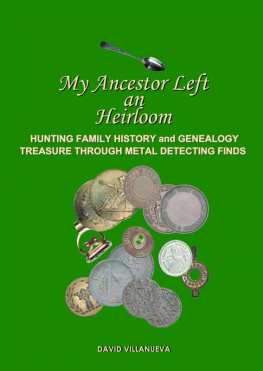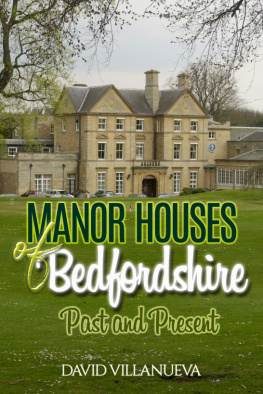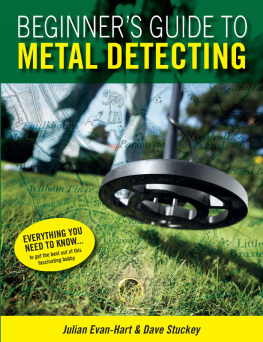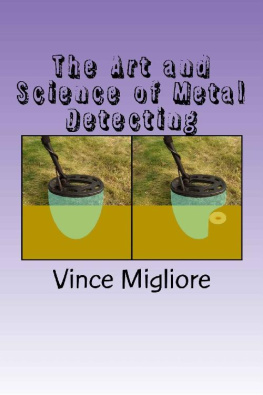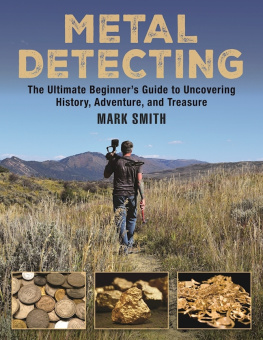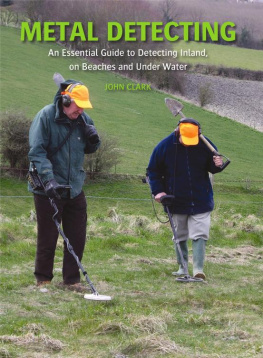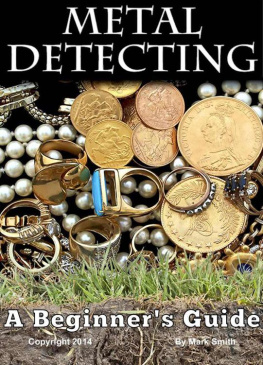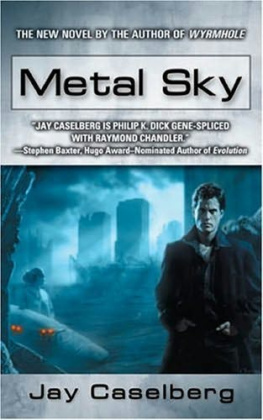My Ancestor Left anHeirloom: Hunting Family History and Genealogy Treasure ThroughMetal Detecting Finds
by David Villanueva
Smashwords Edition
All Rights Reserved. No partof this publication may be reproduced in any form or by any means,including scanning, photocopying, or otherwise without priorwritten permission of the copyright holder. Copyright 2012 DavidVillanueva
Smashwords Edition, LicenseNotes:
This ebook is licensed foryour personal enjoyment only. This ebook may not be re-sold orgiven away to other people. If you would like to share this bookwith another person, please purchase an additional copy for eachrecipient. If you are reading this book and did not purchase it, orit was not purchased for your use only, then please return toSmashwords.com and purchase your own copy. Thank you for respectingthe hard work of this author.
Table of Contents
1. INTRODUCTION
Discovering names and dates can be excitingand you may relish that hard won copy of a document but familyhistory only really comes alive when you clasp your hands aroundyour grandfathers war medal; your great grandmothers christeningspoon or your great, great grandfathers fob seal. Were not allfortunate enough to own such family treasures but its highlylikely that one or more of your ancestors left an heirloom atsometime in the past perhaps you just havent discovered ityet.
In Europe, for well over one thousand years,people from all walks of life have put their names and otherpersonal details on a variety of metal objects to identify or beidentified and to advertise trades or professions. In additionmonarchs, armed forces and civilian institutions increasinglyawarded medals and badges for service and merit. And, of course,many Europeans have migrated across the Globe, so now there arethousands upon thousands of metal objects around, World-wide,engraved with personal details, any of which your ancestor,regardless of how humble, may have made, used or been awarded.
Many of these objects have been widelystudied, collected and catalogued so not only do you have thepossibility of acquiring tangible artefacts to add sparkle to yourresearch but you can also make use of a number of easily obtainablebut little known directories to trace your ancestry back furtherthan you ever thought possible.
Over the past forty years the hobby of metaldetecting has grown up, busily uncovering thousands of lost anddiscarded family heirlooms. Most metal detectorists are interestedin history, getting much pleasure from finding objects, whichidentify an individual or family and are keen to learn more aboutthe personalities behind such artefacts. Others may just like anoutlet to dispose of their finds, particularly those they arecurrently confining to the junk box. So here is a vast resource foruncovering heirlooms and common ground where participants in bothpursuits could benefit each other.
Having been involved in metal detecting,genealogy and family history for over thirty years, I canconfidently:
* introduce you to some of my ancestors whopossessed metal artefacts
* discuss the types of artefacts commonlybeing found, which have family connections
* describe sources for finding out more aboutthese objects and the personalities behind them
* bring finders and families together so thatinformation and artefacts may be beneficially exchanged
* show you a simple way to store and protectyour heirlooms for yourself and future generations
* provide an introduction to tracing yourancestry in the British Isles
In short this book will guide you to sourcesthat may take your ancestry back into the mists of time and helpyou to locate actual heirlooms so you can discover the thrill ofhaving a tangible link with your forbears.
2. ORDERS OF CHIVALRY
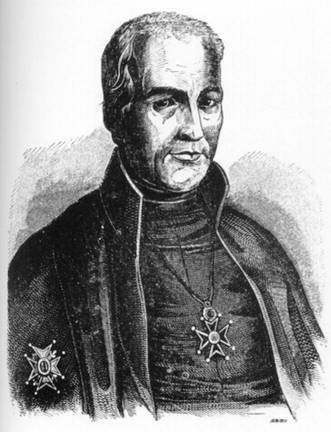
Joaqun Lorenzo Villanueva(1757-1837)
From: Semanario PintorescoEspaol, 1848, p.391
I was first sent this portrait of my great,great, great, grand uncle Joaqun Lorenzo Villanueva, (1757-1837)by the librarian in Valencia. The first thing I noticed is that heis proudly displaying badges or medals. I didnt know what thesesignified at first but digging around as you do, it turns out that,as Confessor to the King of Spain, in 1807 he was awarded an orderof chivalry -- Knight Pensioner Ecclesiastical of the RoyalIllustrious Order of Charles III. He has the badge of the orderaround his neck and the star on his right shoulder. All thephysical trappings of the order have unfortunately been lost.However, to gain admission to that order, Joaqun, or Joachim inEnglish, had to prove nobility and Christian blood back to hisgreat grandparents. In fact not being a man to do things by half,he went back six generations to the sixteenth century on hispaternal line and the result is nearly 600 pages of family historycourtesy of the Spanish National Archives.
So if you have any inkling that an ancestorwas involved in any one of the several hundred chivalric ordersfounded within the last two thousand years, I urge you to look intoit. The family tree following is taken from: Archivo HistricoNacional, Madrid, Consejos, Orden de Carlos III, Expediente1372.

SOURCES
J. H. Lawrence-Archer, Orders of Chivalry: From the Original Statutes ofVarious Orders of Knighthood and Other Sources ofInformation, (London, 1887)
Guy Stair Sainty, Ed. World Orders of Knighthood and Merit (Burke's Peerage and Gentry, 2006). Includesessays on all the current orders of the world, and studies oforders and nobility, heraldry and knighthood, the self-styledorders and lengthy essays on the most famous orders.
FranoisVelde , History of Orders of Chivalry: aSurvey http://www.heraldica.org/topics/orders/ordhist.htm
David Villanueva, My Ancestor Left an Heirloom: DiscoveringHeirlooms and Ancestors Through the Metalwork They LeftBehind, (Whitstable, 2011)
3. MEDALS AND BADGES
There isnt much difference between medalsand badges. A medal is defined as a piece of metal usuallycoin-like, bearing some design or inscription issued usually tocommemorate an event or as a reward of merit. A badge on the otherhand can be a mark or emblem signifying membership of a society oran order etc., but can also be a meritorious award. We tend tothink of medals as circular or sub-circular (e.g. a cross) andbadges as variously shaped metal pieces designed to be pinned toclothing.
Now I love documents but I love artefactseven more. Below is a school attendance medal awarded in 1908 to mymaternal grandmother for four years excellent attendance from theCity of Birmingham Education Committee. You can hold it and almostfeel the joy and pride of an eleven year old girl who was giventhis for not missing a days schooling in four years.
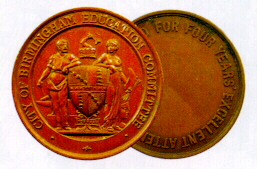
Just to put a face to the name my maternalgrandmother, Hilda Beatrice Brotherton (1896-1948) is picturedhere.

Thousands of School Attendance medals wereawarded between c.1887 and c.1920 when the scheme was abandoned infavour of prize-giving. Other attendance medals I know of are:
St Nicholas Sunday School Devon, neverabsent, never late but no personal engraving.
Next page
